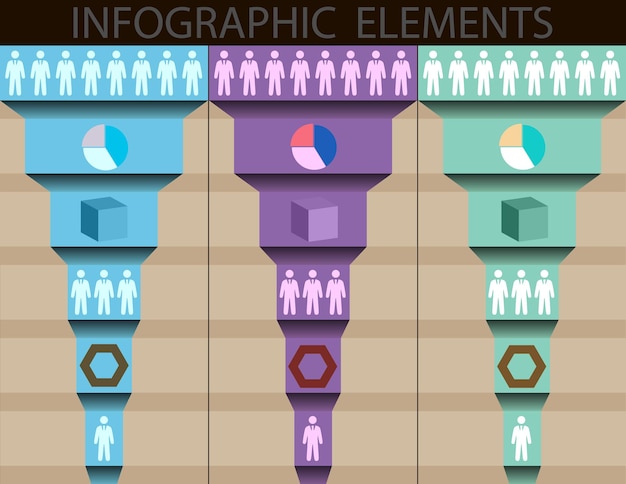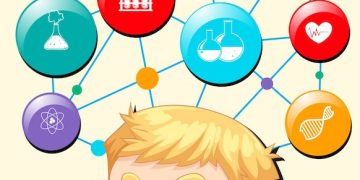NAEP Results: Key Findings & Implications for US Education

The National Assessment of Educational Progress (NAEP) provides crucial insights into the academic performance of US students, revealing trends, achievement gaps, and areas needing improvement in local education.
The latest National Assessment of Educational Progress (NAEP) Results: Key Findings and Implications offer a comprehensive look at how students across the US are performing. Let’s delve into what these results mean for our local schools and communities.
Understanding the National Assessment of Educational Progress (NAEP)
The National Assessment of Educational Progress, often called “the Nation’s Report Card,” provides valuable data about student achievement in various subjects. This assessment helps educators, policymakers, and the public understand how well students are learning and where improvements are needed.
What is NAEP?
NAEP is a standardized assessment administered periodically to students in grades 4, 8, and 12. It covers subjects like mathematics, reading, science, and writing, offering a snapshot of academic performance across the United States.
Why is NAEP Important?
NAEP is critical because it provides a common measure of student achievement across states and demographic groups. This allows for comparisons and helps identify disparities in educational outcomes, leading to targeted interventions and policy changes.
- Provides a benchmark for student performance nationwide.
- Tracks changes in academic achievement over time.
- Informs educational policies and funding decisions.
- Identifies achievement gaps and areas needing improvement.

The NAEP results are not just numbers; they tell a story about the progress of our education system. By understanding the strengths and weaknesses revealed by NAEP, we can work together to ensure all students have the opportunity to succeed.
Key Findings from the Latest NAEP Results
The most recent NAEP results offer a mixed bag of insights. While some areas show progress, others reveal persistent challenges. Let’s explore some of the key findings from the latest assessment.
Mathematics Performance
In mathematics, the latest NAEP results have shown a decline in scores, particularly among lower grades. This decline is concerning and highlights the need for effective math instruction and support for students.
Reading Performance
Reading scores have also seen a slight decrease, indicating that students may struggle with reading comprehension and critical thinking skills. Targeted interventions are needed to improve reading proficiency and foster a love of reading.
- Math scores declined significantly in grades 4 and 8.
- Reading scores showed a slight decrease across all grades.
- Achievement gaps persist between different demographic groups.
- Remote learning during the pandemic had a negative impact on academic performance.
The latest NAEP results underscore the importance of investing in evidence-based educational practices and providing targeted support to students who are struggling. By addressing these challenges, we can ensure all students have the opportunity to thrive.
Achievement Gaps and Equity Concerns
One of the persistent issues highlighted by NAEP is the presence of achievement gaps between different demographic groups. These gaps reflect systemic inequalities and disparities in educational opportunities.
Racial and Ethnic Disparities
NAEP data consistently show achievement gaps between white students and students from minority groups, particularly Black and Hispanic students. These gaps underscore the need for targeted interventions and equitable resource allocation.
Socioeconomic Disparities
Students from low-income families often score lower on NAEP assessments compared to their more affluent peers. This highlights the impact of poverty on educational outcomes and the need for comprehensive support services.
- Achievement gaps persist between white students and minority students.
- Students from low-income families score lower on NAEP assessments.
- Access to quality education and resources varies across schools and districts.
- Systemic inequalities contribute to disparities in educational outcomes.

Addressing achievement gaps and promoting equity in education requires a multi-faceted approach that includes targeted interventions, equitable resource allocation, and culturally responsive teaching practices. By prioritizing equity, we can ensure all students have the opportunity to reach their full potential.
Impact of the Pandemic on NAEP Results
The COVID-19 pandemic has had a profound impact on education, disrupting learning and exacerbating existing inequalities. The latest NAEP results reflect the challenges faced by students and educators during this unprecedented time.
Remote Learning Challenges
The shift to remote learning presented numerous challenges for students, including limited access to technology, lack of face-to-face interaction, and difficulties with engagement and motivation. These challenges have contributed to declines in academic performance.
Disparities in Access and Support
The pandemic has also widened disparities in access to resources and support services. Students from low-income families and marginalized communities have been disproportionately affected by school closures and disruptions to learning.
The pandemic has underscored the importance of addressing systemic inequalities and providing targeted support to students who are struggling. To support and move forward, we should consider:
- Remote learning had a negative impact on student achievement.
- Disparities in access to technology and support services widened.
- Mental health challenges among students increased during the pandemic.
- Recovery efforts are needed to address learning loss and support student well-being.
The NAEP results highlight to us all the need for sustained recovery efforts and targeted interventions to address learning loss and support student well-being. By prioritizing the needs of our students, we can help them overcome the challenges of the pandemic and thrive in the future.
Implications for Local Schools and Communities
The NAEP results have important implications for local schools and communities. By understanding the key findings and trends, we can work together to improve educational outcomes and support student success.
Curriculum and Instruction
The NAEP results can inform decisions about curriculum and instruction, helping educators identify areas where students are struggling and develop targeted interventions. Evidence-based practices and innovative teaching strategies can help improve student achievement.
Teacher Training and Support
Investing in high-quality teacher training and support is essential for improving educational outcomes. Teachers need access to professional development opportunities and resources to effectively address the diverse needs of their students.
Considering this, a local school or community can explore ideas like:
- Informing curriculum and instructional practices.
- Supporting high-quality teacher training and professional development.
- Providing targeted support and resources to struggling students.
- Engaging families and the community in supporting student success.
The latest NAEP Results highlight how important it is to find effective data that can inform educational policies and practices. By working together, we can create a brighter future for our students and communities.
Strategies for Improvement and Future Directions
To address the challenges highlighted by NAEP and improve educational outcomes, a comprehensive and collaborative effort is needed. By implementing effective strategies and embracing innovation, we can create a more equitable and effective education system.
Evidence-Based Practices
Investing in evidence-based practices and interventions that have been shown to improve student achievement is essential. These practices should be tailored to the specific needs of students and schools.
Technology Integration
Technology can play a powerful role in enhancing teaching and learning. By effectively integrating technology into the classroom, we can create more engaging and personalized learning experiences for students.
We can follow these steps of improvement:
- Prioritize evidence-based practices and interventions.
- Better integrate technology to enhance teaching and learning.
- Emphasize social-emotional learning and student well-being.
- Promote equity and access to high-quality education for all students.
By implementing these strategies and embracing innovation, we can improve educational outcomes and create a brighter future for all students. The National Assessment of Educational Progress (NAEP) Results: Key Findings and Implications serve as a valuable tool for monitoring progress and guiding improvement efforts.
| Key Point | Brief Description |
|---|---|
| 📊 Declining Math Scores | Math scores in grades 4 and 8 have significantly declined, indicating a need for improved math instruction. |
| 📖 Slight Decrease in Reading | Reading scores have slightly decreased, suggesting students may face challenges in reading comprehension. |
| 📉 Persisting Achievement Gaps | Achievement gaps persist between different demographic groups, highlighting inequalities in education. |
| 🦠 Pandemic Impact | Remote learning during the pandemic negatively impacted academic performance, widening existing disparities. |
Frequently Asked Questions (FAQ)
▼
The National Assessment of Educational Progress (NAEP) assesses student achievement in various subjects, providing a snapshot of academic performance across the US.
▼
NAEP assesses subjects such as mathematics, reading, science, writing, and others, depending on the assessment year and grade level.
▼
NAEP is administered periodically, typically every two years for core subjects like math and reading, and less frequently for other subjects.
▼
NAEP involves a sample of students in grades 4, 8, and 12 from both public and private schools across the United States.
▼
NAEP results are used to track trends in student achievement, identify areas needing improvement, and inform educational policies and funding decisions at the national and state levels.
Conclusion
The National Assessment of Educational Progress (NAEP) Results: Key Findings and Implications provide critical guidance for educators, policymakers, and communities alike. By addressing achievement gaps, supporting teachers, and embracing evidence-based practices, we can work towards ensuring that all students have the chance to succeed.





